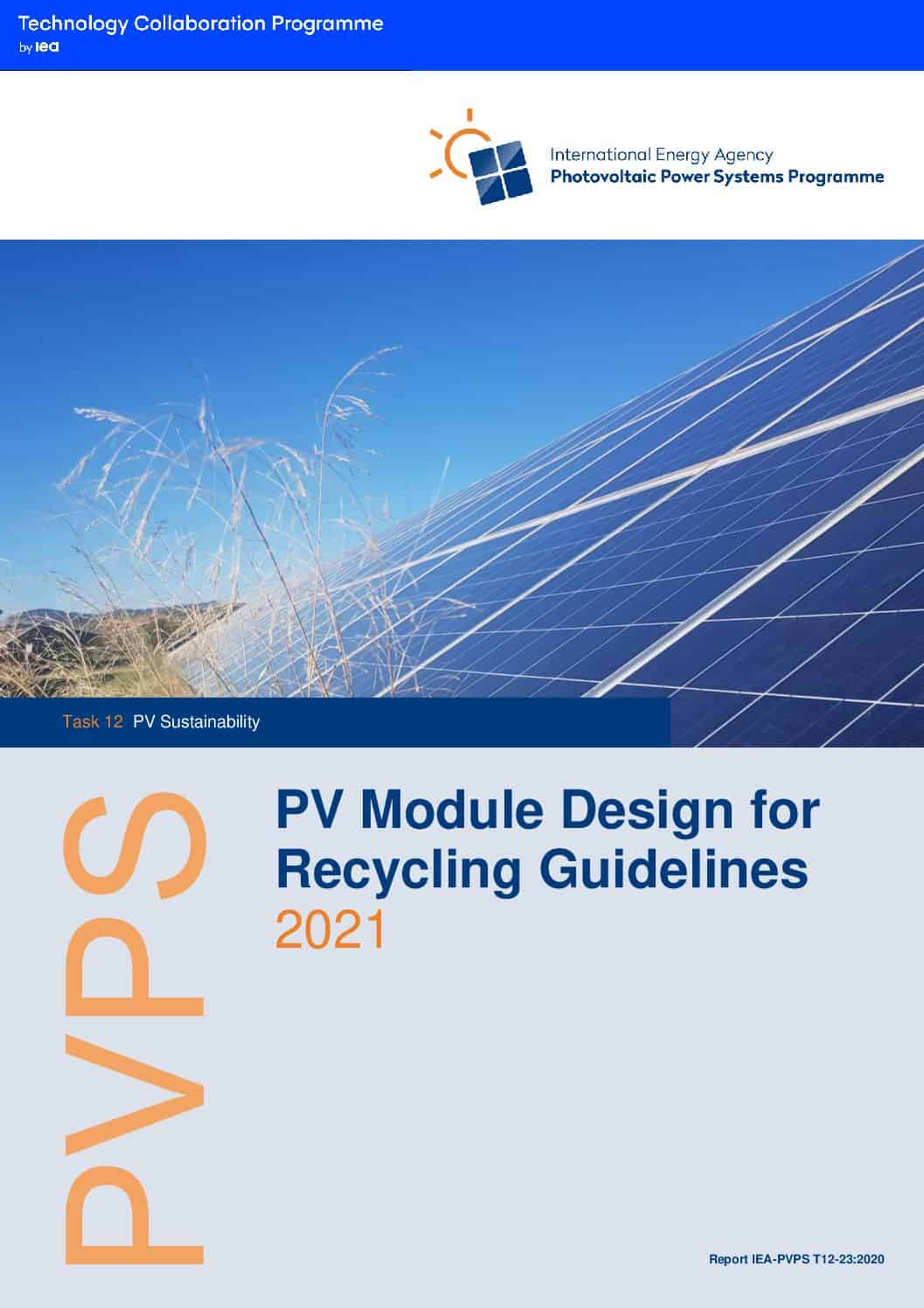The global growth of clean energy technology deployment will be inexorably followed by a parallel growth of end-of-life (EOL) products that bring both challenges and opportunities. Cumulatively, by 2050, estimates project 78 million tonnes of raw materials embodied in the mass of EOL photovoltaic (PV) modules. Owing partly to concern that the projected growth of clean energy technologies could become constrained by availability of raw materials, despite ongoing dematerialization efforts, significant attention under the umbrella of circular economy has been brought to recycling these technologies at EOL. Yet PV has not been designed with recycling at EOL in mind, and it presents challenges to returning embodied raw materials back to use in new products through recycling. This study aims to inform future designs to improve recyclability through synthesis of prior published works augmented by novel recommendations that result in a set of general design for recycling (DfR) guidelines, with a subset specific to PV modules, as listed below.
DfR General Guidelines
- Product requirements such as functionality, longevity, durability, reliability, and cost are critical; DfR should support or enhance these aspects but may result in trade-offs between recyclability and product performance and cost.
- Material choice and the ability to liberate separate materials are critical to DfR outcomes.
- Recycling outcomes can be enhanced by minimizing hazardous materials in products, or by recovering these materials completely via DfR.
- Minimizing and managing hard-to-recycle materials can improve overall recycling yield.
- Minimizing non-reversible adhesives or similar bonds, especially over whole surfaces and for dissimilar materials, can facilitate disassembly and material liberation.
- Design for disassembly (DfD) can improve recyclability.
- Estimating recyclability improvements and economic and environmental impacts due to DfR is important for continuous improvement, identification, and weighing of trade-offs and communicating value.
- Using labels to identify recyclable and non-recyclable materials helps recyclers classify feedstocks; labelling standardization is important for uptake and utilization.
- Designing products to use recycled materials promotes circular manufacturing.
DfR PV specific guidelines
- Durable identification of module construction and composition could enable safer and more efficient recycling processes.
- Backsheet composition has particularly important implications for recyclability.
- Metal choices can have significant impacts on recycling processes and costs.
- Minimizing encapsulant use or using reversible encapsulants can facilitate disassembly of PV modules.
- Decreasing the number and complexity of module materials presents trade-offs related to recyclability and economics.
- Using different sealants in the aluminium frame could enable module separation without component damage.
We further discuss how established trends in design of PV modules could affect recyclability. If adopted today, application of these DfR guidelines could help to mitigate tomorrow’s resource scarcity, lower the barriers and cost for PV recycling, and enable a circular economy during the energy transition.
